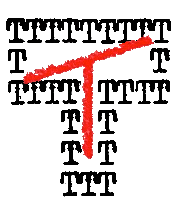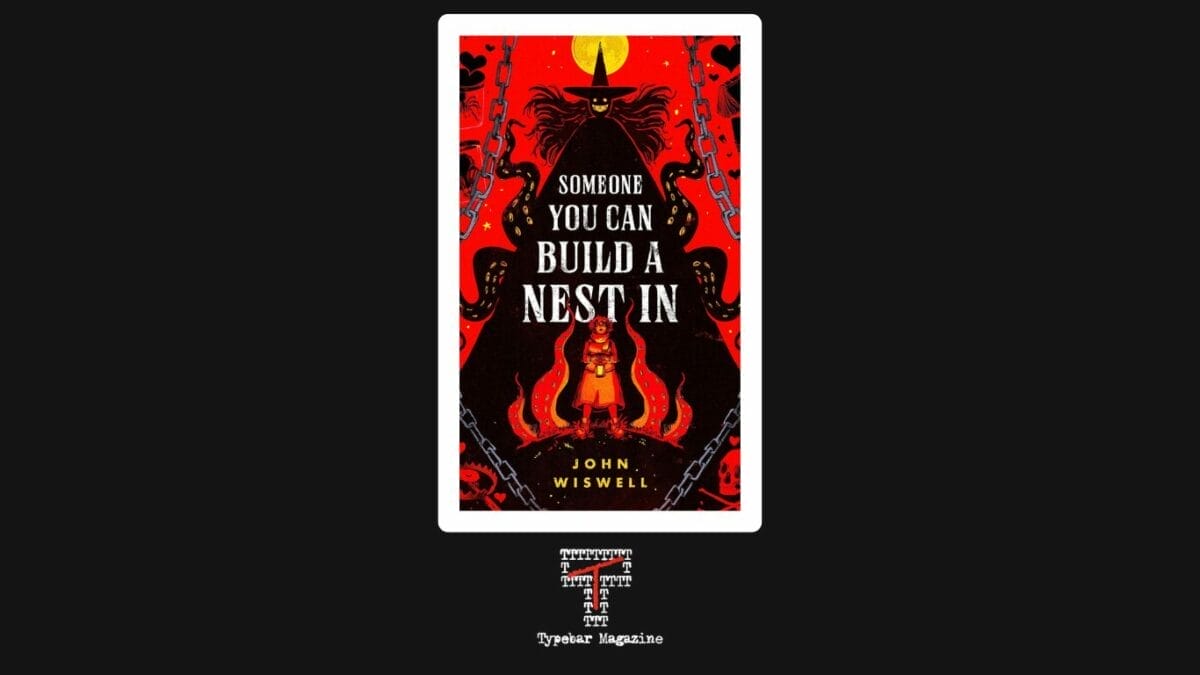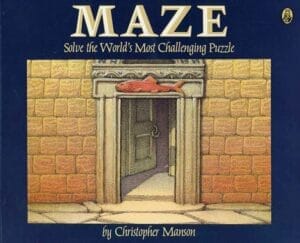By Karlo Yeager Rodríguez
Worldbuilding discussions in genre fiction frequently miss the point. Instead of being a mere exercise in delivering bloated lore or secret histories, good worldbuilding is about the constraints a fictional locale places on the people living in that world. It’s about how at the most fundamental level, living in the world requires compromises. Trade-offs of some stripe or another. In fiction, it can serve the purpose of hinting at a complexity we recognize in the real world, as well as how these limitations can inform character. The further I read in John Wiswell’s Someone You Can Build a Nest In, I realized the book lacked this approach to crafting a fantasy world.
The novel starts strong enough, introducing Shesheshen, the monstrous protagonist of the book. Referred to by fearful townsfolk as “The Wyrm of Underlook,” she is not a dragon nor even reptilian, but a monster made of shapeshifting goo. As the story opens — her hibernation interrupted by monster hunters breaking into her lair — we get glimpses into the reality of Shesheshen’s biology:
“. . . She opened pockets in her flesh and took in her first real breath of the season. The air was stale and frigid, making it feel as though icicles were forming along her innards. She shuddered, using the air to puff out her body, and emerged from her pool. Water streamed from the many lumps of her body, gone loose from weeks of slumber. . .”
Since Shesheshen has no skeleton, she must absorb her prey’s bones or other durable objects, such as steel or iron rods (not to mention a bear trap as a weapon of last resort). These prosthetics must be routinely replaced because she digests them. They are also a constant source of pain. It’s hands down the most interesting part of the book because instead of merely being metaphor, it grounds us in Shesheshen’s physical and material reality. We also get the reason for the book’s title: not only did she and her siblings devour their “father” but this models what Shesheshen believes love is — her ideal mate would be generous and loving enough to be host to their parasitic young:
“Each year when Shesheshen hibernated, she dreamed of her childhood nest.
“Oh, the warmth of it. A warmth unlike anything in the adult world, soft and pliable heat keeping her and her siblings alive. In that warmth, they were fed raw life. Her father’s ribs, rich in marrow, cracking delicately in their mouths, and providing the first feast of their lives. His fat deposits were generous, and his entrails sheltered them from the cruel winter elements. If Shesheshen could have spent her entire life inside the nest of his remains, she would have. . .”
Back in the lair, the monster hunters are equipped with rosemary oil (poisonous to Shesheshen) and fire (destructive to everything) to dispatch the so-called wyrm. Leading them is the heir to the local barony, Catharsis Wulfyre. Famished from hibernation, Shesheshen initially adopts a human disguise to avoid attacking the interlopers in her weakened state. She attempts to send them on a wild goose chase by posing as a captive of the wyrm. Shesheshen attacks when her ruse is foiled. Catharsis dies in the scuffle, but not before one of one of his companions shoots Shesheshen full of rosemary oil, forcing her retreat.
Famished from her hibernation, and now further weakened by the poison coursing through her, she makes her way into town to feed so she can regain her strength. What she ends up doing is crashing Underlook’s “We Killed the Wyrm” party, instead. After some hijinx, she flees the town just as hungry as before, falls off a cliff and — quite literally — into the romance plot.
When she comes to, her wounds are being treated by Homily.
“…Her captor approached around the left side of the campfire, belly swaying with her motion. She was a stocky human woman, with a strong chin and round cheeks, tatters of girlhood still clinging to a few of her features. Her cheeks glowed deeper than the fire, and her beige skin was pleasantly pockmarked, mostly unadorned except around her eyes, where she had clusters of freckles. It was like a witch had taken a handful of freckles and thrown them into her gaze.”
Dying of hunger, Shesheshen nonetheless can’t risk killing and eating Homily in her weakened state. However, later, we learn Homily poses another threat: she is a Wulfyre.
As one might have guessed, the Wulfyres seem to have a literary theme for their names. Outside of their matriarch, who is only ever called “Baroness,” the rest of the family is as follows: Homily, eldest daughter, and Shesheshen’s nest-cum-love-interest; Epigram, Homily’s younger sister and amateur sadist; and finally Ode, the youngest sister, and the Baroness’s favorite after Catharsis. Further into the novel, there’s also a trio of bandits named for corrupt systems of government. It seems odd to give villainous characters not so much names as labels, but this seems to support my theory that the world of Someone You Can Build a Nest In eschews internal coherence in favor of being funny. More on this in a bit, since the humor here so often works at cross-purposes to the immersiveness.
Once the romance plot begins, Shesheshen’s material and physical reality is eclipsed by the growth of what she initially believes is a heart. That it later turns out to be an egg sac and not a Looney Tunes-style heart was — admittedly — a small letdown.
In true rom-com fashion, a series of mishaps and interruptions prevent Shesheshen from telling Homily the truth: she’s the so-called Wyrm terrorizing the area; but not before Homily reveals that she’s Catharsis’ sister, and could Shesheshen help her kill the Wyrm of Underlook to lift a curse on her family? Taken aback, Shesheshen excuses herself and has herself a little private screaming fit before coming back to Homily with promises to help her.
This involves meeting the rest of Homily’s family, who are all written as one-note, capital-V villains, straight out of Central Casting. The Baroness is imposing and very hands-on in commanding the monster hunt. Epigram, Homily’s abusive younger sister, takes the role of sadistic lackey (though she styles herself as second-in-command). Ode, the youngest sister, is mostly a background annoyance. All of them abuse Homily in slightly different ways, too. Pushed to protect the person she’s chosen for her young to lovingly devour, Shesheshen — who it should be emphasized was orphaned and grew up feral in the wilderness — suddenly knows how to connive and intrigue with the best of them.
Much of the rest of the book is spent yo-yoing between town and the surrounding woods. The tone feels like it’s intended to be madcap, but comes across as repetitive. Defying the Baroness’ wishes, Shesheshen joins the hunt in an attempt to lead it astray. The speed with which a semi-feral shapeshifting worm is able to spread misinformation in these scenes strains credulity, in part because most of the mercenaries and grunts are portrayed as amazingly gullible.
The attack of another creature Shesheshen later realizes is her offspring (she had split off a part of herself earlier), brings things to a head. This leads to Shesheshen and Homily both ending their arcs confronting their abusers. In Shesheshen’s case, the Baroness is revealed to be her mother, who had abandoned her to take on the identity of the Baroness Wulfyre. She also planned to harvest her offspring for their egg sacs because they have a rejuvenating effect. However, the Baroness did not expect her daughter to poison her own eggs before giving them up, and she’s undone by her own appetites. Clever girl.
Battered, but triumphant, she staggers back to her girlfriend’s tent. Homily’s wrapped up in her cloak, facing away from her, but there’s no stopping Shesheshen from confessing everything. But wait — in true soap opera fashion, she didn’t just have a heart-to-heart with her girlfriend, but with Epigram. Homily tries to intervene, but because of Epigram’s past abuses Homily ends up slitting her sister’s throat.
This is presented as a hard stop and appropriately horrifying. It works. . . but only insofar as we accept all the casual violence and death background characters suffer as proper payment for Shesheshen’s and Homily’s happily ever after.
There’s an epilogue where we’re told that Homily will dissolve her Barony “slowly” which seems nice, but wouldn’t you know it — that story just so happens to fall outside the frame of this one. It also seems so odd that for all the talk of monstrousness and othering that the text seems to be interested in referring to, Shesheshen’s story seems to be one of assimilation. For example, Shesheshen doesn’t seem to take on non-human forms, nor does it seem she wants to. Homily, either. Shesheshen’s offspring doesn’t seem to be interested in assuming a human form, but then again they are presented as nearly feral.
The rules here are fuzzy, and this seems to go back to the issue with worldbuilding, and how often the book’s humor seems to work at cross-purposes to the world Shesheshen inhabits. But what happens if the humor just isn’t that funny?
There’s no delicate way to say you didn’t find something funny without sounding churlish, but much of the humor in Someone You Can Build a Nest In did not land for me. I can understand, at a surface level, comparisons to the godfather of humorous and cozy fantasy, Terry Pratchett. It’s to be expected, especially since the Discworld books are wildly popular, have sold 100 million copies worldwide, and are. . . well, funny. If you’re going to aspire to something, might as well go for the exemplar of that genre. However, despite its secret bear trap, the humor lacks some of Pratchett’s signature bite. Part of the issue is there’s a certain breeziness to those background things that might ground the world. The isthmus where Shesheshen and the townspeople of Underlook live is described like so:
“The citizens of Underlook were vultures. All trade routes from east and west had to cross the isthmus – that one little land bridge. With so few wild animals to eat, Shesheshen had to attack caravans that crossed the isthmus, seizing their meat and leaving behind useless lamp oil and pink salts and high-thread-count undergarments. Underlook then descended and divvied up the spoils, such that even the most mediocre of their children wore britches and capes meant for monarchs. People had trouble proposing marriage for all the gemmed rings clogging up their fingers. . .”
Amusing but if Shesheshen’s raids have been so numerous and successful as to change the entire economics of the nearby town, one wonders why traders continue to use the overland route and not sail past it? Good question. A suddenly affluent burgher class, perhaps chafing under the reign of the local aristocracy also feels like something Pratchett would have developed into a full-blown subplot, but not here. It also would’ve been funny for the Baroness to have to contend with people who due to their wealth wouldn’t take kindly to her routine threats of bodily harm. They might even get some curious ideas of exactly where her aristocratic head belongs. Oh well.
Part of the problem seems to be that the romance elements don’t seem to work in tandem with the fantasy ones. Thus here, the focus on the romantic couple can easily be narrowed from the grand movements of systems and institutions to the realm of personal victories. That Shesheshen ends up co-ruling the very realm her mother did with an iron fist is not remarked upon. In fact, it’s treated like a bitterly-won prize — which makes the promises of dissolving the Barony feel tacked on. And as the iron rule of Happily Ever After/Happy For Now in romance requires, the story places that process just out of frame. Shesheshen’s offspring, Epilogue’s eschewing of the human form seems to hint that the kids might be all right. But without much else than a generational changing of the guard, it certainly feels like the only thing that can stop a bad monster with a barony is a good monster with one. 
Karlo Yeager Rodríguez hails from the enchanting Island of Puerto Rico, but now lives near Baltimore with his spouse and one odd dog. His writing can be found in places like Strange Horizons, khōréō magazine, and Beneath Ceaseless Skies, as well as Blood Knife and Lammergeier Magazine. He also hosts Podside Picnic, where he continues his genre miseducation.





